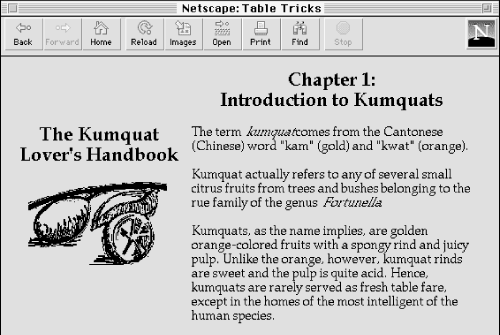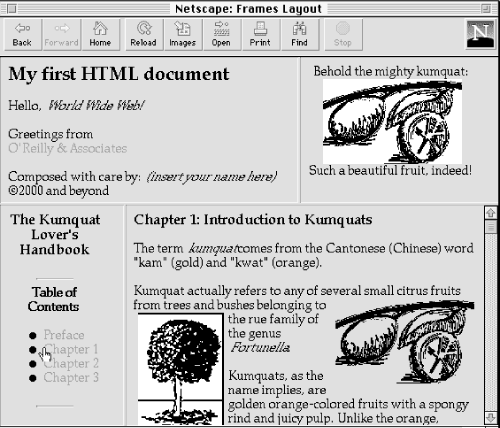HTML The Definitive Guide (18 page)
Read HTML The Definitive Guide Online
Authors: Chuck Musciano Bill Kennedy

HTML forms provide everything you might expect of an automated form, including input area labels, integrated contents for instructions, default input values, and so on - except automatic input verification; your server-side program or client-side applets need to perform that function.
2.8 Images Are Special
2.10 Tables




2.10 Tables
For a language that emerged from academia - a place steeped in data - it's not surprising to find that HTML supports a set of tags for data tables that not only align your numbers, but can specially format your text, too.
Five tags enable tables, including the
| ) or table data ( | ) tags and their respective contents for each cell in the table. Headers and data may contain nearly any regular HTML content, including text, images, forms, and even another table. As a result, you can also use HTML tables for advanced text formatting, such as for multicolumn text and sidebar headers (see Figure 2.5 ). For more information, see Chapter 11, Figure 2.5: HTML tables let you perform page layout tricks, too
2.9 Lists, Searchable 2.11 Frames Documents, and Forms
2.11 Frames Anyone who has had more than one application window open on their graphical desktop at a time can immediately appreciate the benefits of frames. Frames let you divide the browser window into multiple display areas, each containing a different document. For more information on frames, see Figure 2.6 Figure 2.6: Frames divide the window into many document displays Other booksA Sunday at the Pool in Kigali by Gil Courtemanche Her Cowboy Protector by Roxie Rivera Beg Me by Jennifer Probst Paid Servant by E. R. Braithwaite Piggy Party (Cul-de-sac Kids Book #19): Book 19 by Beverly Lewis Unexpected by J.J. Lore High The Vanes (The Change Book 2) by Kearns, David Revenge by Gabrielle Lord Hopeless by Cheryl Douglas |
|---|







